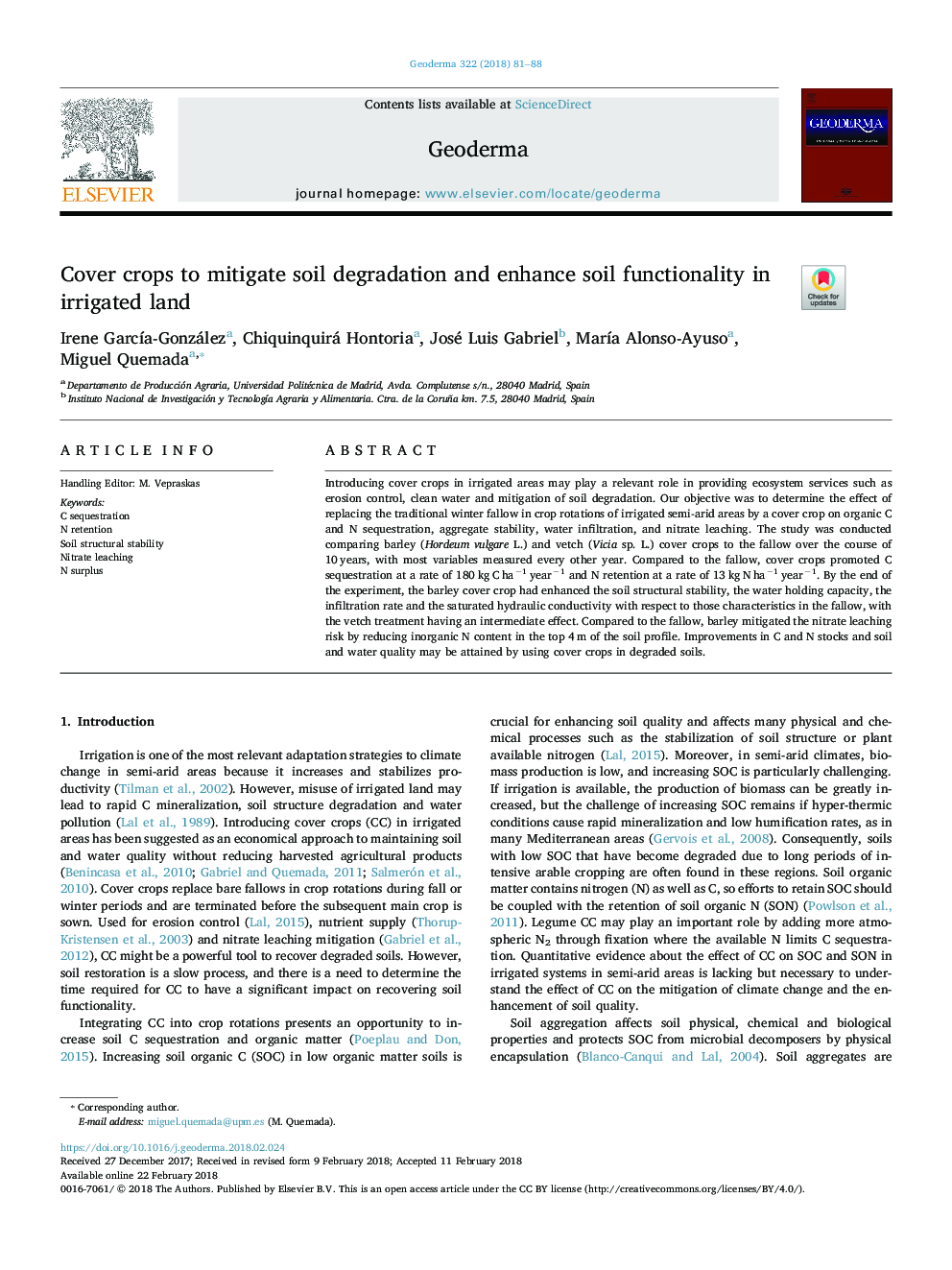| Article ID | Journal | Published Year | Pages | File Type |
|---|---|---|---|---|
| 8894068 | Geoderma | 2018 | 8 Pages |
Abstract
Introducing cover crops in irrigated areas may play a relevant role in providing ecosystem services such as erosion control, clean water and mitigation of soil degradation. Our objective was to determine the effect of replacing the traditional winter fallow in crop rotations of irrigated semi-arid areas by a cover crop on organic C and N sequestration, aggregate stability, water infiltration, and nitrate leaching. The study was conducted comparing barley (Hordeum vulgare L.) and vetch (Vicia sp. L.) cover crops to the fallow over the course of 10â¯years, with most variables measured every other year. Compared to the fallow, cover crops promoted C sequestration at a rate of 180â¯kgâ¯Câ¯haâ1â¯yearâ1 and N retention at a rate of 13â¯kgâ¯Nâ¯haâ1â¯yearâ1. By the end of the experiment, the barley cover crop had enhanced the soil structural stability, the water holding capacity, the infiltration rate and the saturated hydraulic conductivity with respect to those characteristics in the fallow, with the vetch treatment having an intermediate effect. Compared to the fallow, barley mitigated the nitrate leaching risk by reducing inorganic N content in the top 4â¯m of the soil profile. Improvements in C and N stocks and soil and water quality may be attained by using cover crops in degraded soils.
Related Topics
Physical Sciences and Engineering
Earth and Planetary Sciences
Earth-Surface Processes
Authors
Irene GarcÃa-González, Chiquinquirá Hontoria, José Luis Gabriel, MarÃa Alonso-Ayuso, Miguel Quemada,
